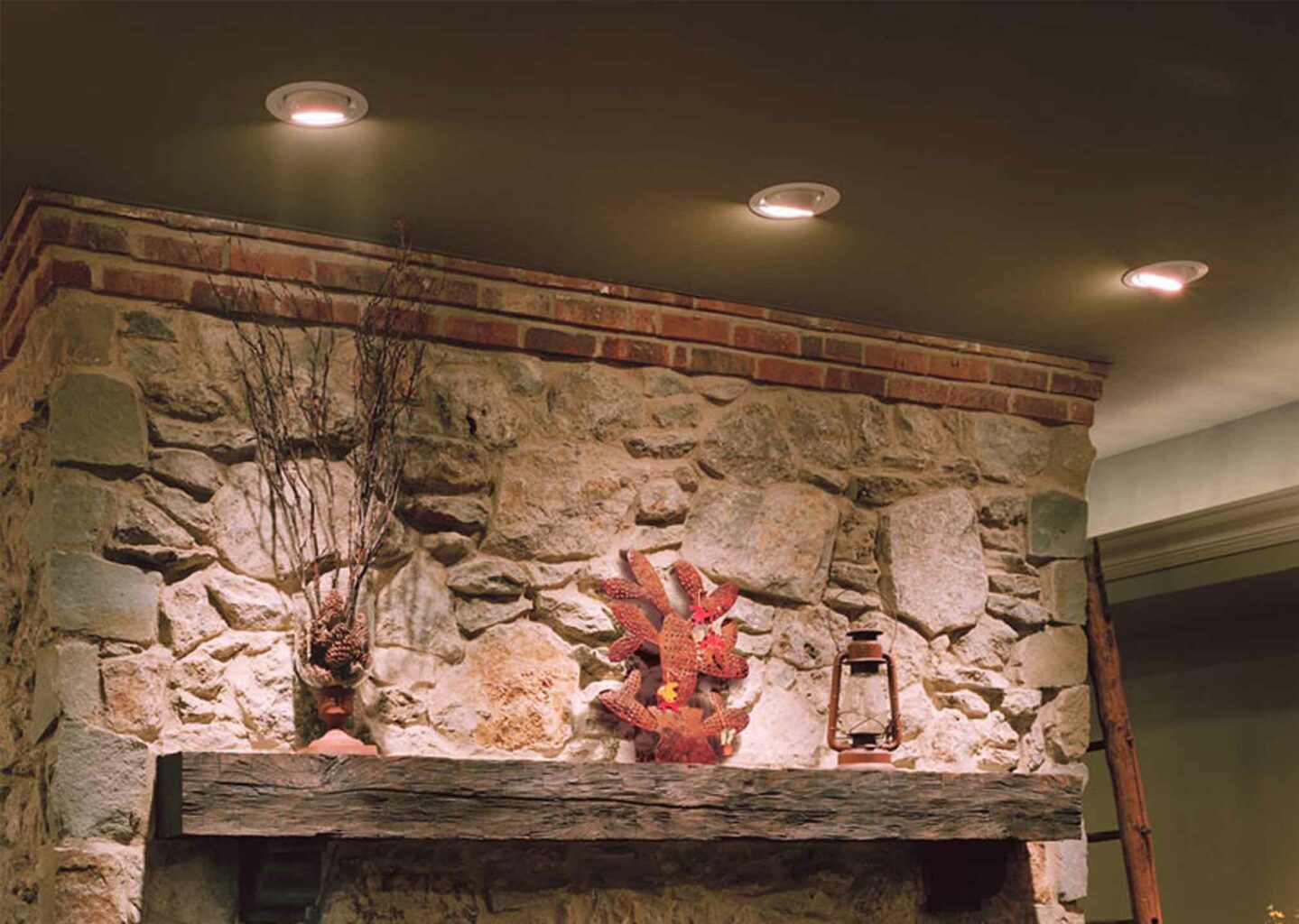By James Dulley
Recessed “can” light fixtures play a role in lighting many people’s homes, but outdated fixtures are oftentimes not energy efficient recessed lighting. Generally, however, there are inexpensive simple things that can be done to make those existing recessed light fixtures more efficient and brighter.
The first thing to do is replace any incandescent or CFL bulbs with LEDs. CFL bulbs are just slightly less efficient than LEDs, but they do not come to full brightness immediately as LEDs do. This may cause you to quickly switch on more lights than you actually need for the task at hand. They also do not direct as much light downward which is important with recessed lighting.
This recessed light fixture is Energy Star qualified. It has a built-in bar hanger which adjusts up to 24 inches long. Photo credit James Dulley
Much of the light energy gets lost inside the canister because most light bulbs, other than PAR and BR types, emit light in all directions. Simply painting the inside of the canister bright white can reflect more of the light out the bottom where you want it. This is good for ambient lighting. For specific task lighting, PAR or BR bulbs are better, but they may create glare.
If your existing recessed fixtures are old, they probably leak a lot of room air into the attic. This is the most inefficient characteristic of older ones. Build a box with at least six inches of clearance around them. This should reduce air leakage and allow enough surface area for the heat to dissipate safely with LED bulbs.
An interesting and efficient new design has a four-inch speaker built into the center of an eight-inch flat LED integral fixture. It is Bluetooth enabled so you can pair it with your cell phone or computer. This light/speaker can link up with others throughout your house. It just snaps up into a standard eight-inch canister and is held in place with springs.
Another option for the existing canister fixtures is to use a plain flat surface mount integral LED bulb. These have a wire attached to an end that screws into the light socket just as a bulb would. Once it is screwed in, springs on the sides of the flat LED bulb snap into the canister. This holds it up against the ceiling. A foam ring seals against the ceiling.
For your new recessed fixtures where indoor air leakage is a possibility, select a newer airtight design which has a sealed canister. The sealed airtight recessed fixture canister, when installed properly, also forms a seal between the ceiling and the fixture. These types of recessed fixtures are also effective for ceilings between floors to minimize drafts and noise transmission.
When installing one in a ceiling under an insulated attic floor, chose an IC-rated (insulation contact) canister design. These fixtures are designed to be able to touch the attic insulation for efficiency without the hazard of overheating.
(As a safety note, do not go into the attic and wrap the existing recessed canisters with insulation to try to save energy. Wrapping it with insulation can allow it to hold too much heat, particularly if you still have some old standard incandescent bulbs in them. These older fixtures are not designed to be airtight and the excess heat buildup can become an electrical and fire hazard.)
Make a lighting plan before you just start sawing holes in ceilings. When installing recessed light fixtures yourself, first determine your lighting goals. If you want to brighten an entire room, downlighting can be very effective. In a normal-height ceiling, a 4-foot spacing of the recessed light fixtures provides an even lighting pattern at floor level.
Five-inch downlight features a dedicated LED, new construction housing with integral light engine designed to provide 50,000-hours of life. Photo credit Acuity Brands
First, determine how many recessed fixtures needs for adequate lighting. The light beam angle for a typical PAR-type LED or bulb is about 45 degrees and a BR-type is about 55 degrees. This may not seem like much, but for a 10-ft. by 15-ft. room, using BR-type bulbs requires three less fixtures for even room lighting.
Typical 6-inch-diameter fixed vertical fixtures would work well for downlighting. If you would like to dim some of the lights, consider installing a second separate circuit and dimmer switch. Install several dimmable integral LED fixtures on that circuit.
Retrofit LED IC-rated eyeball trim modules offer a fast, economical way to upgrade existing 6-inch housings. Photo credit Acuity Brands
For task lighting, a single fixed vertical fixture directly over the work area is effective. Wall wash recessed lighting can be used to accent a painting or some other wall hanging. An eyeball recessed light with an LED bulb is best for this application because the light path can be adjusted. For a sloped cathedral ceiling, install an angular recessed fixture.
It is not difficult to install recessed light fixtures yourself. The key to an attractive, efficient installation is to cut the mounting holes to the exact size as recommended by the manufacturer. This makes it much easier to create a good seal between the fixture and the ceiling. Before you start drilling and cutting holes, make sure fixture layout clears all the floor joists.
The following companies offer efficient recessed fixtures: Acuity Brands, (847) 827-9880, acuitybrands.com; Cooper Lighting, (770) 486-4800, cooperind.com; Elco Lighting, (323) 231-2600, elcolighting.com; Generation Lighting, (800) 969-3347, generationlighting.com; and Philips Lighting, (800) 555-0050, lighting.philips.com.
James Dulley is a mechanical engineer and an avid do-it-yourselfer with a nationally syndicated newspaper column. Send inquiries to James Dulley, Colorado Country Life, 6906 Royalgreen Drive, Cincinnati, OH 45244 or visit dulley.com.

